Internal combustion, piston, in-line engine
Single row engines.
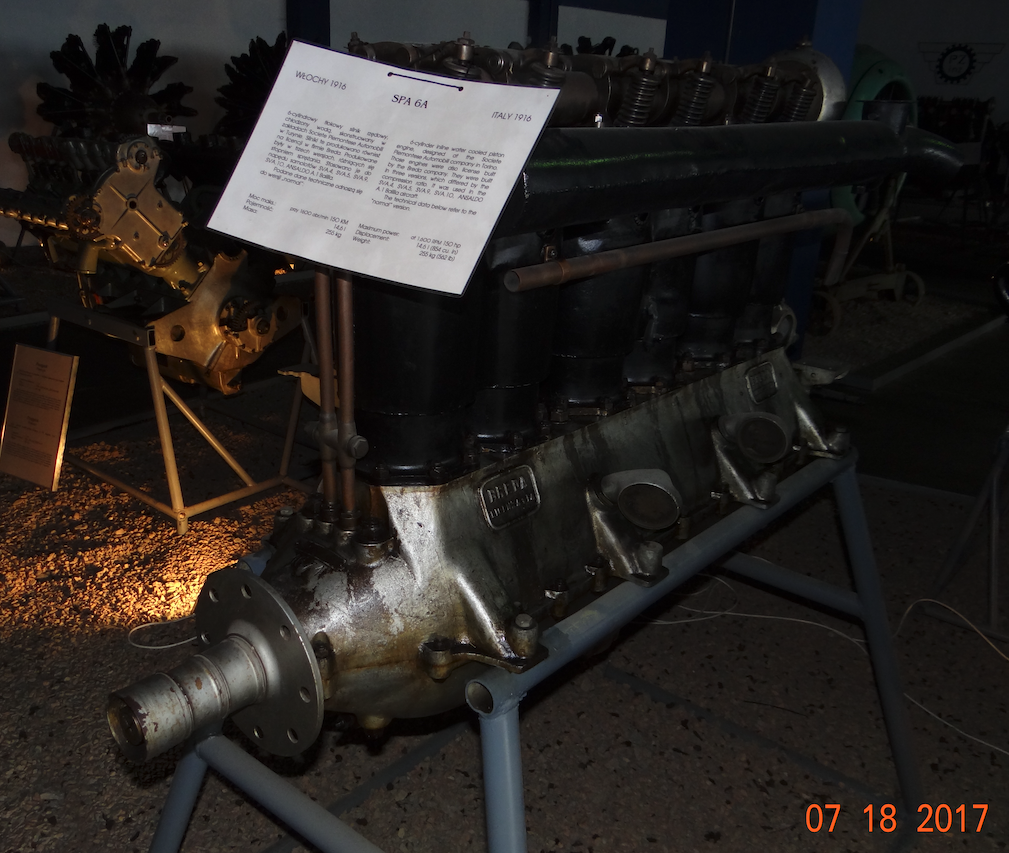
Description to the photo: The SPA-6A engine is an in-line, 6-cylinder engine, 150 HP at 1,600 rpm, capacity 14.6 liters, engine weight 255 kg. The engine was built at the Societe Piemontese Automobili plant in Turin. These engines were also produced by the Breda company. These engines were installed on the following airplanes: SVA.4, SVA.5, SVA.9, SVA.10, Ansaldo A.1 Balilla.
Inline engines appeared at the same time as radial and rotary engines. Initially, there was no need to classify in-line engines. But the variety of design solutions was huge. Much greater than with radial engines. Generally, in-line engines are divided into single-row, double-row and multi-row engines. Often, double and multi-row are simply referred to as multi-row. In addition, they can all be arranged in a classic arrangement (cylinders at the top, body at the bottom) or inverted. Multi-row engines can be in the arrangement: V-shaped (V, W or X), double deck, boxer arrangement and intermediate systems, e.g. H. As in star engines, in-line engines can be naturally aspirated or supercharged, with or without a reducer, carbureted or injection-cooled, air-cooled or liquid-cooled.
A typical single-row engine is four or six cylinders. This is how the first aircraft engines were built. This engine layout has become typical of car propulsion for several decades. But in aviation it was not used for a long time. It has been replaced with the popular "boxer" system, which is distinguished by several important features. First, it is much more compact, which makes it lighter. Secondly, its construction is characterized by a low height, which makes it suitable for mounting in the front of the fuselage in front of the pilot's cabin, because it limits visibility in a minimal way. The "boxer" arrangement is correctly called push-pull or opposing cylinders.
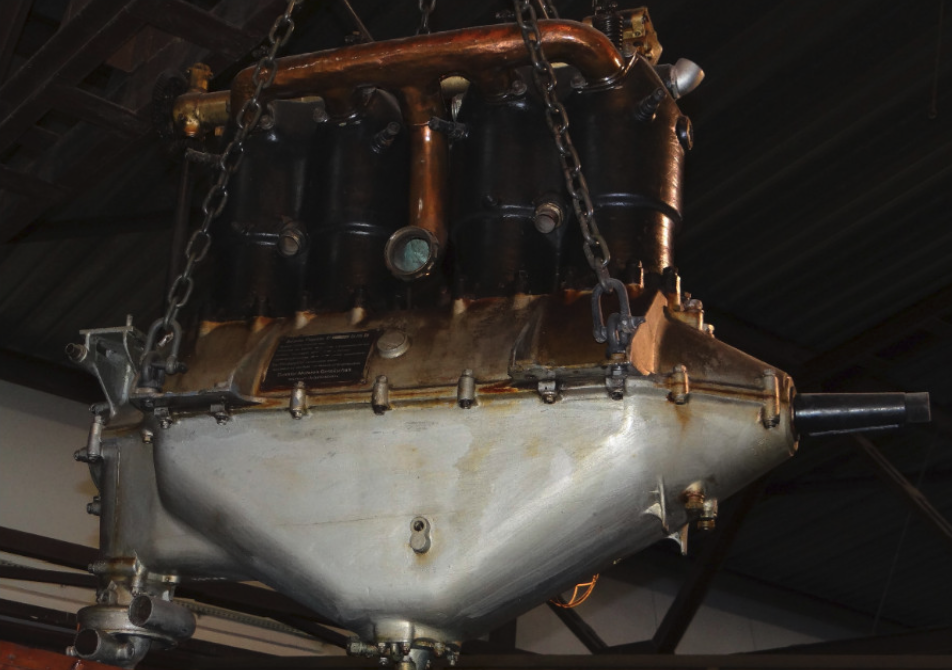
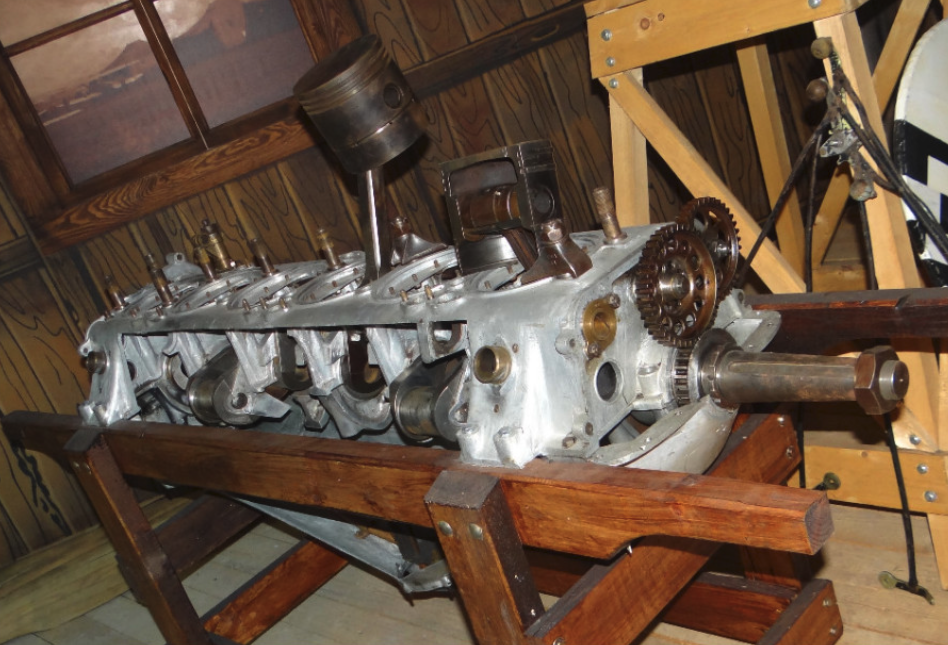

V motors.
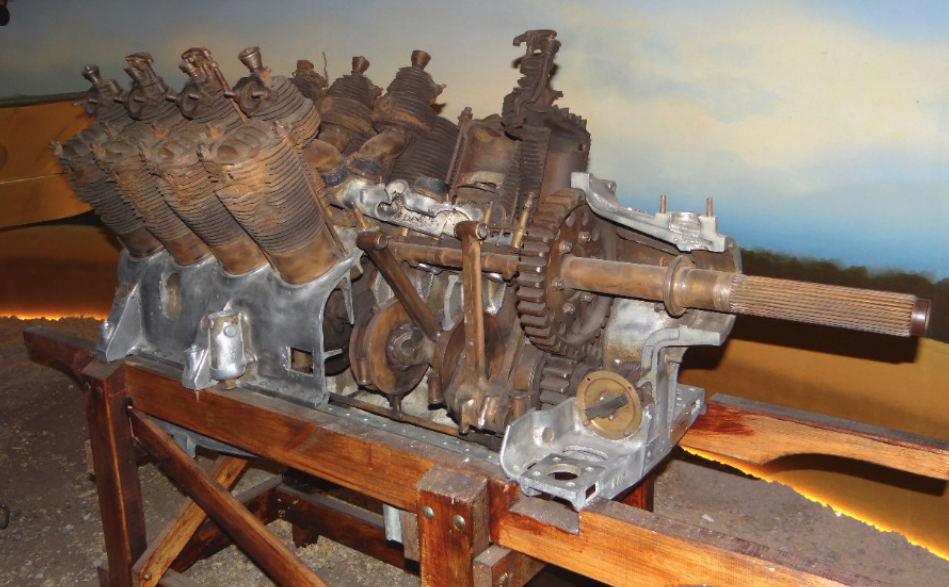
An important difference between a radial engine and a straight engine is the length of the crankshaft. In a radial engine, it is much shorter, which makes the crankcase smaller, and thus the engine is lighter. So why was the in-line engine, especially during the Second World War, considered better than the stellar engine? Although in the US and UK this was not the opinion. The main reason was the smaller cross-section (frontal) of the engine. As a result, the fuselage of the plane could be narrower and allowed for higher speeds. Although in truth, not that huge.
To explain this, we have to go back to the great world war. The participating planes flew at a speed of 150 km / h and more. The fastest on earth at that time was the train and its steam locomotive, which, however, rarely exceeded the speed of 100 km / h. At that time, aviation designers were not very interested in increasing speed. The goal was more maneuverability, lifting capacity, ceiling and flight time. When the war ended, the plane became entertainment and sport as before. Only a few started transporting mail, goods and passengers.
But the desire to race is in human genes. That is why as early as 1912, Jacques Schneider, a financier, balloon pilot and aviation enthusiast founded a trophy called the Schneider Trophy. The trophy is a sculpture made of silver and bronze set on a green marble pedestal. The sculpture shows a winged female figure kissing a man whose head is sticking out of the raging wave. Symbolism connects air and water together. A seaplane and flying boat race was to be held every year (every two years later). Jacques Schneider believed that the future of aviation lay in seaplanes and flying boats. In addition to the trophy, there was a financial award of £ 1,000. Winning a sub-row three times resulted in taking the trophy forever, winning a prize of £ 75,000 and ending the competition. The winner became the organizer of the next competition. This principle was common in aviation. The races were overseen by the FAI and the host country's Aero Club. Each country was allowed to field three players. The competition was held 12 times in the period 1913-1931. The competitors raced on a circuit with a length of 280 km (later 350 km). The planes took off from the water at 15-minute intervals. Due to the high costs of preparing special aircraft, only the richest countries participated in the competition; UK, USA, Italy, France. The competition was very popular and attracted 200,000 viewers.
Racing has made significant advances in the field of aircraft design, especially aerodynamics and engine design. The experience gained had a significant impact on the construction of fighters from World War II. Among them, the British Supermarine Spitfire, the American North American P-51 Mustang, the Italian Macchi Mc.202 Folgore. The fastest planes became free-bearing monoplane with slender fuselages, closed cabins, very low windbreaks and fairings. The standard was a liquid-cooled, 12-cylinder in-line engine.
The Americans won the Schneider Trophy twice on Curtiss airplanes, which were built especially for these races. In 1923, the Curtiss CR-3 was the winner with an average speed of 285.29 km / h (177.27 mph), and in 1925, the Curtiss R.3C-2 was 374.28 km / h (232.57 mph). . The Curtiss company at that time was the factory that built both planes and engines.
The American racing seaplane R.3C-2 was a machine of small dimensions, practically such that it could be fitted with an engine and a pilot. Wingspan 6.71 m (22.0 ft), length 6.71 m (22.0 ft), height with floats 3.14 m (10 ft 4 in), wing lift area 13.4 m2 (144 sq ft) Curtiss C-80 airfoil profile. The aircraft had a range of only 467 km (290 mi; 252 nmi), which is just enough to do one race. Max speed 394 km / h (245 mph, 213 knots).
The success of the American team was ensured by the Curtiss V-1400 engine. It was a development version of the French Lorraine-Dietrich 12 engine, a classic then 12-cylinder V-type engine. The Curtiss company systematically modernized it. In 1925, the Curtiss V-1400 engine had a power of 610 hp, and its next version in 1926, already 665 hp.
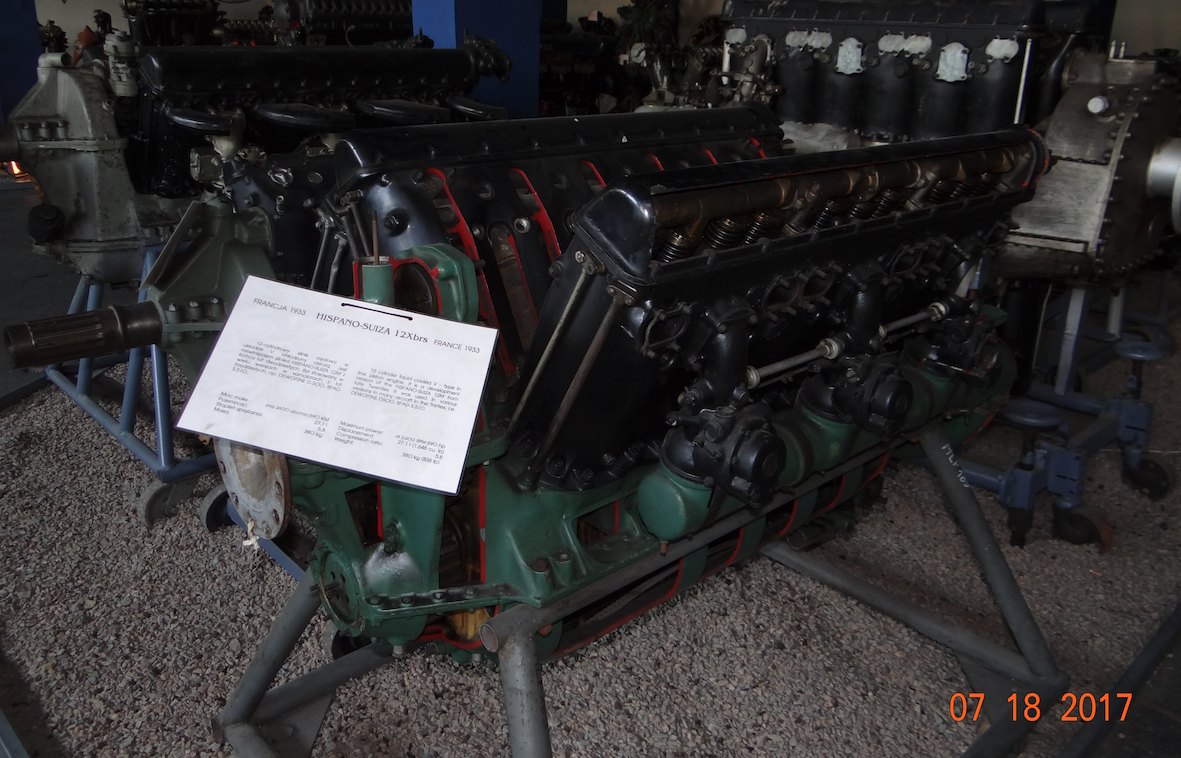
Description for the photo: Hispano-Suiza 12Xbrs V 12-cylinder engine, 690 HP at 2,600 rpm, capacity 27.1 liters, compression ratio 5.8: 1, engine weight 380 kg. The engine was built in 1933, and was derived from the 1928 Hispano-Suiza 12M engine.
In 1926, Italians won the competition for the Schneider Trophy for the third time. However, their first victory was annulled, and besides, they were not victories in a row (1920, 1921, 1926). The Italians at that time had one of the best aviation techniques. For the competition in 1926, they prepared a special Macchi M.39 water-jet racing plane. The M.39 plane was designed by Eng. Mario Castoldi. It was the first Macchi low wing aircraft. Mixed wood and metal construction. The wooden wings are stiffened with stiffeners. The pilot sat in an open cockpit with a residual windbreak. Due to the fact that during the competition, planes fly counterclockwise and make turns to the left, therefore the left aileron deflected higher. To counteract the gyro moment of the propeller, the floats had uneven buoyancy so that less rudder countering was required when taking off from the water.
The plane was built in two versions: training (two pieces, MM.72, 73) and competition (three pieces, MM.74, 75, 76). The training version had a Fiat AS.2 engine in the V-12 system, water-cooled, with a power of 600 HP (447 kW). The competition version had a Fiat AS.2 engine with another supercharger, producing 800 hp (597 kW). Due to the fact that the machine was a single airframe, it was slightly larger than the American ones. The Macchi M.39 had a span of 9.26 m (30 ft 4 in), a length of 7.77 m, a height of 2.97 m (9 ft 9 in), a maximum speed of 439.4 km / h (237 knots, 272 mph) .
The Fiat AS.2 engine was derived from the A.22 engine. The cylinders are made of steel and the heads are made of aluminum. The pistons themselves are made of magnesium alloys. Despite problems with the engine, it proved to be effective in the competition for the Schneider Trophy.
During the preparations for the competition, on September 16, 1926, one of the planes crashed in Lake Varese, burying the pilot. However, the works were not stopped. On November 13, 1926, three Macchi M.39 planes took part in the race. One of them (MM.76) won with 396.698 km / h (246.497 mph). The MM.74 aircraft was third. The MM.75 aircraft had an engine failure and did not finish the race.
After the competition for the Schneider Trophy, on November 17, 1926, on the same body of water in Hampton Roads in the USA, a 3 km (1.9 miles) race took place during which the Macchi M.39 MM.76 aircraft achieved a record speeds of 416,618 km / h (258,874 mph).
In 1927 came the British golden years of competing for the Schneider Trophy. The British have already won this competition once. It was before the great world war in 1914. The new Supermarine S.5 seaplane was designed by Eng. Reginald Mitchell. The plane was based on the S.4 machine, which had not been successful the year before. The entire airframe was metal. Mainly aluminum alloys are used. The plane was slightly larger than the previous winners in the competition. Wingspan 8.15 m (26 ft 9 in), length 7.32 m (24 ft 3 in), height 3.38 m (11 ft 1 in). Top speed 514.3 km / h (319.57 mph).
Three planes were built, but with different engines. The first was the Napier Lion VII.A engine with 900 hp (671 kW) in the W-12 system. Two more planes received Napier Lion VII.B engines with 875 hp (652 kW). The first flight of the structure took place on June 7, 1927. The planes took the first two places in the competition. A record of 453.28 km / h (281.66 mph).
The Napier Lion engine was built by Napier & Son from 1917 to 1930. The engine was built in many configurations. It was one of the most powerful engines of its time. It was used in racing cars, airplanes and boats.
Another attempt to break the speed record ended in a disaster. Additionally, the Napier Lion engine was deemed to have exhausted its capabilities. Everyone interested in participating in the next competition stated that 12 months is too short a period for good preparation of the new structure. It was decided to extend this period to 24 months. For the competition in 1929, the British prepared a revised plane, which was designated Supermarine S.6 with a new engine from Rolls-Royce.
The Rolls-Royce R engine was built specifically for the racing plane by Rolls-Royce Limited. 12-cylinder V-type engine, liquid-cooled, supercharged. It had a capacity of 27 liters (2,240 in3). He weighed 770 kg (1,640 lb). Power 2,800 hp (2,090 kW). Thanks to good financing, it was possible to effectively remove all noticed defects. The engine has become extremely reliable and has a high service life. This engine allowed the British to win the race in 1929 and 1931. In 1929, the Supermarine S.6 with the Rolls-Royce engine achieved an average speed of 528.89 km / h (328.64 mph). In 1931, the British reached a speed of 547.31 km / h (340.08 mph) and won for the third time, finishing the competition. Shortly after the 1931 competition, a special fuel-powered Rolls-Royce R engine accelerated the Supermarine S.6B to over 400 mph (640 km / h). The experience gained by Rolls-Royce and the Supermarine designers led to the Rolls-Royce Merlin engine and the Spitfire.

Description for the photo: V-type Rolls-Royce Kestrel IIS engine, 12-cylinder, 525 HP maximum, 21.2 liters, compression ratio 6.0: 1, propeller speed reduction 0.55, engine weight 420 kg, liquid-cooled. The Rolls-Royce Kestrel IIS engine was built in 1926 and was mounted on the following aircraft: Hawker Hart, Hawker Demon, Hawker Fury, Hawker Nimrod.
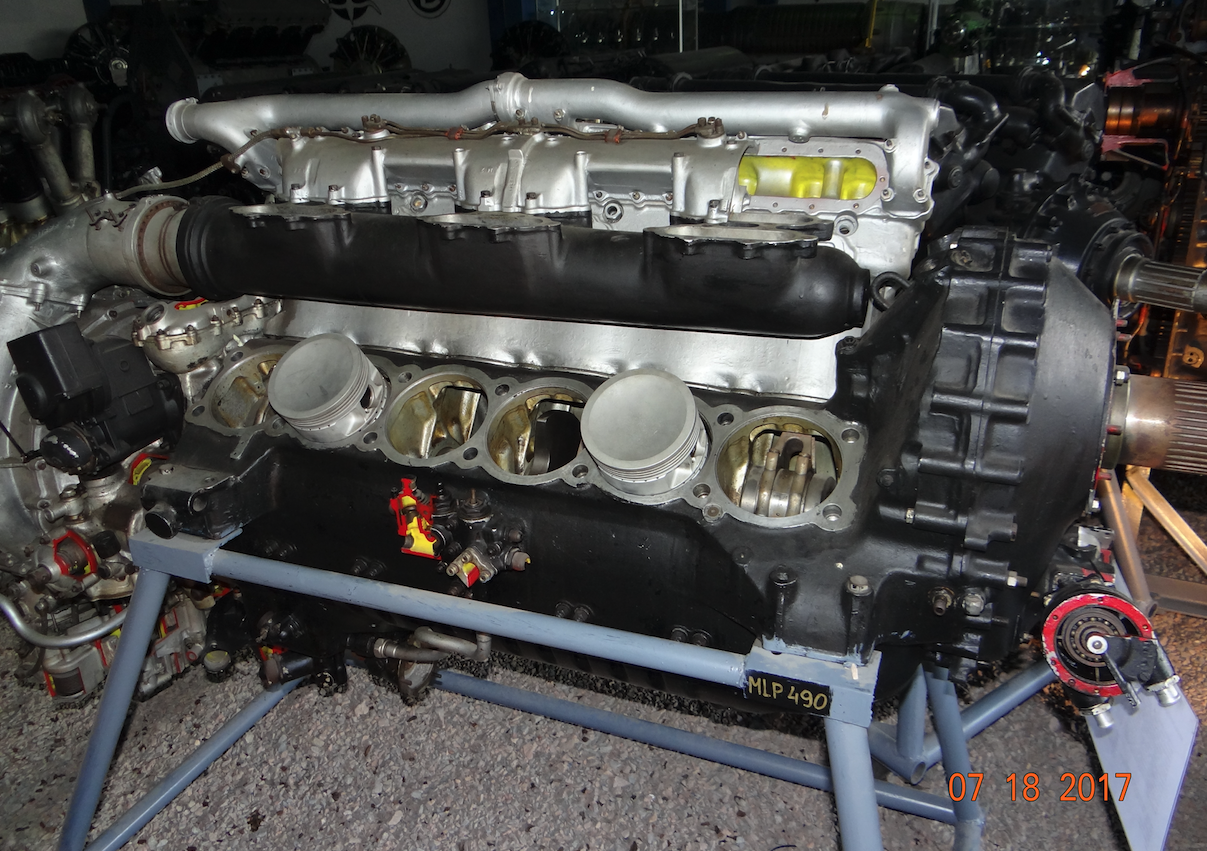
Description for the photo: 12-cylinder V Rolls-Royce Merlin XX engine cooled with liquid (ethylene glycol), maximum power 1,300 hp at 3,000 rpm, capacity 27 liters, compression ratio 6.0: 1, propeller speed reduction 0.69, engine weight 660 kg. The Rolls-Royce Merlin XX engine was installed in many aircraft, for example: Hawker Huricane, Supermariner Spitfire, De Havilland Mosquito.
However, the pilots continued to race. In April 1933, a Macchi M.C.72 (202) aircraft (on Lake Garda in northern Italy) set a speed record of 682.36 km / h (424.00 mph). Eighteen months later, on October 23, 1934, the 700 km / h barrier was broken in the same place at an average speed of 709,202 km / h (440.678 mph). This speed remains the highest speed achieved by a reciprocating seaplane.
Written by Karol Placha Hetman
